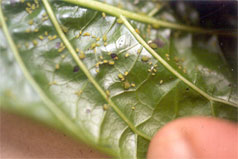
ABOVE: melon aphids (Aphis gossypii) on a noni leaf.
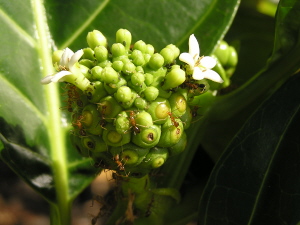
ABOVE: Long-legged ants tending aphids and feeding on flower nectaries on young noni fruit.
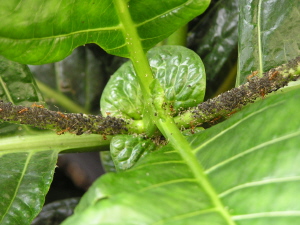
ABOVE: Citrus aphids on noni petioles; here the aphids are tended by long-legged ants. |
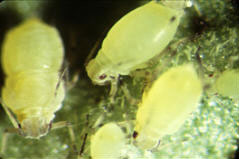
ABOVE: Close-up of adult and juvenile melon aphids.
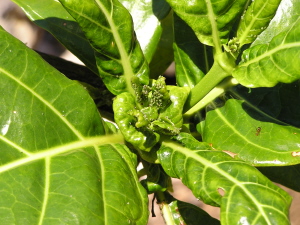
ABOVE: Aphid colony feeding on young noni leaves. Young leaves are curled and distorted due to heavy feeding by the aphids.
Aphids are sap-feeding insects. Their feeding damage to noni is usually not significant, but can result leaf distortion or the formation of black sooty mold on noni leaves. |

